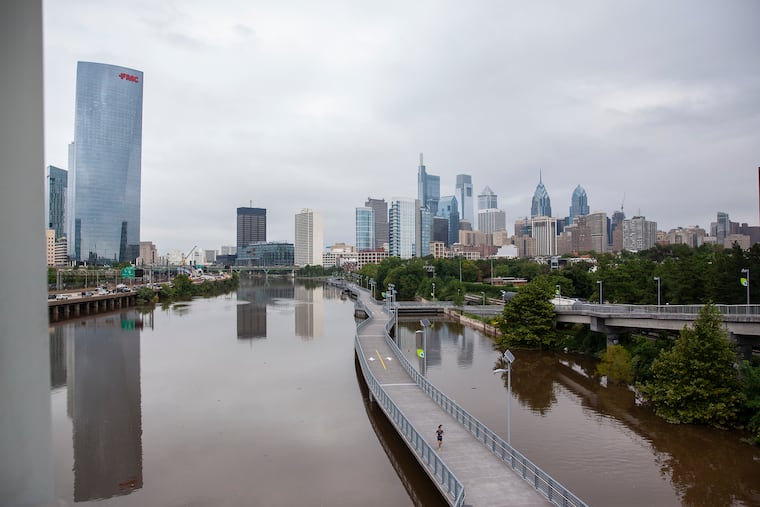24-day gloom streak ends, but this month joins top 5 rainiest Septembers
This has been the fifth wettest September on record.

Bob Larson was in Philadelphia to attend a birthday party for his 5-year-old nephews when rain decided to crash the party and forced everyone to go inside.
This was on July 21, and it wasn't just a summer shower, but a steady, chilly, nor'easter-type rain. "Everyone was turning to me, the weather guy, and saying, 'What's going on?'" recalled Larson, a senior meteorologist with AccuWeather Inc.
Now, they might ask, why did it go on and on?
Saturday marked the first officially "clear" day in Philadelphia since Sept. 4, according to the National Weather Service, and only the third of what was quite a rainy month, and quite a rainy several weeks, and quite a wet year.
That July 21 storm marked the start one of the region's wetter such periods in records that date to 1871, culminating in what has been officially the fifth-rainiest September in Philadelphia.
Fresh rain early Friday pushed the monthly total to just under 10 inches, according to the National Weather Service.
"This is part and parcel of what has been a wet year," said Larson. "Six of the nine months have been above average."
Already, Philadelphia's precipitation since Jan. 1, just over 43 inches, exceeds the city's average for an entire year. So has Atlantic City's. Areas to the west of Philadelphia have been substantially wetter, according to the Middle Atlantic River Forecast Center, which uses a network of stations in each county.
Chester County's total since Jan. 1 has passed 51 inches, and Berks is approaching 60.
Larson, who works out of State College, Pa., another area that has been creamed, said he could offer "no one easy soundbite of an answer."
But a major player has been the so-called Bermuda high — a sprawling area of high pressure, or heavier air — centered over the North Atlantic. "It has been unusually strong," he said.
Winds circulate clockwise around high centers, so areas to the west experience winds from the south.
Those winds have imported generous quantities of subtropical moisture northward. Meanwhile, the high has blocked fronts from sliding eastward and away from the region. The result has been a consistent atmospheric soup of water vapor, ripe to be harvested for rainfall by disturbances riding along those fronts.
"You got that sponge in the atmosphere just ready to get wrung out," said Larson.
In September, the region approached a standard for saturation with consistently high "dew points," which are absolute measures of moisture in the air, as opposed to humidity, which is relative to the temperature. The dew point is the temperature at which water vapor comes out of hiding and condenses, and a reading of 70 indicates a high moisture content.
September has had more than 225 hours with 70-plus hourly dew point readings, the most since September 1970, according to data from the weather service and the Pennsylvania state climatologist.
Another symptom of the subtropical air is the fact that temperatures in September have been better than 3 degrees above normal. Usually, rain and associated cloud cover depresses temperatures.
Evidently, however, a welcome pattern change is underway, heralded Friday evening by what has been an unusual sight lately: An actual sunset.
Given the last several weeks, the forecast looks almost hallucinatory: Sunshine, not a drop of rain, and temperatures in the 70s.
Larson indicated that his nephews have forgiven him. One of them is even interested in meteorology.
Said Larson, "I sense a visit to his classroom."
Here are the top 5 rainiest Septembers at Philadelphia's official measuring stations:
1999: 13.07 inches
1911: 12.10 inches
1882: 12.09 inches
2011: 10.27 inches
2018: 9.76 inches